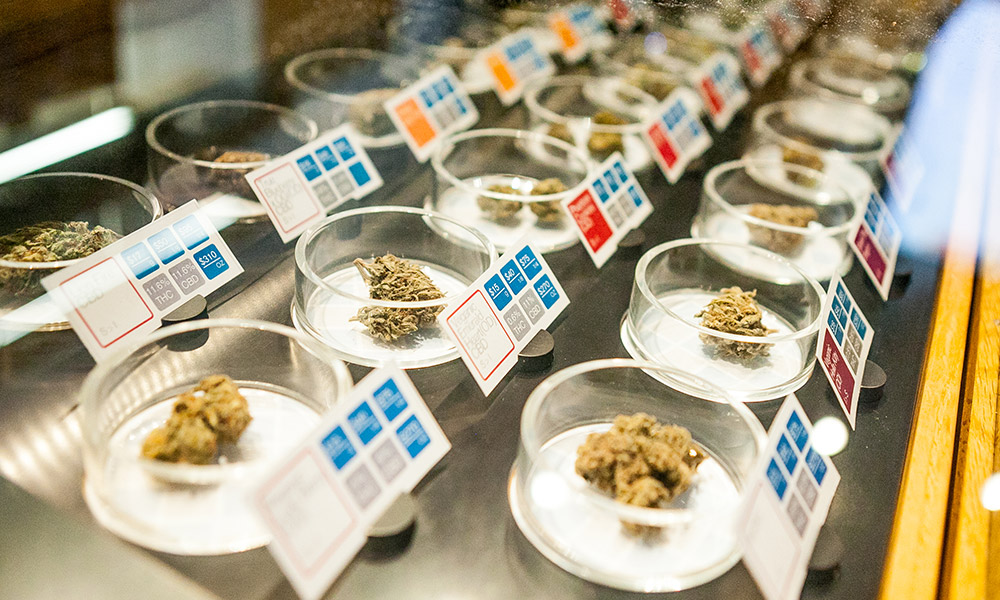
Economics
First-Ever Legal Cannabis Price Index Released
One of the cannabis industry’s big data players just released an index that can help keep track of product prices around the nation.
Apart from state regulators, few have a more expansive a view on which products pass through dispensaries on their way to consumers than the sales trackers from BDS Analytics, and now they’ve used that information to compile the industry’s first-ever price index, a move they announced Tuesday.
According to BDS, the new index will serve as a benchmark for the retail price of cannabis nationally. They also announced the launch of a monthly report on consumer sales across Arizona, California, Colorado, Oregon, and Washington.
BDS begins its report with the data from January 2018, when the world’s largest recreational marketplace opened up in California. From there, the report goes through each month until October, covering fluctuations in price in between.
“Every business in the cannabis industry is making assumptions about the current and future retail prices of cannabis products,” said Roy Bingham, CEO and co-founder of BDS Analytics said in a statement. “After years of capturing and processing this data, we have decided to remove all of the guesswork for both businesses and investors by providing them with a sound basis for planning and projections.”
The National Cannabis Industry Association was supportive of the move that would further normalize the industry.
“I think this is a great idea, particularly as more states create legal markets and more companies are going public,” said NCIA Media Relations Director Morgan Fox. “It is very useful for investors and entrepreneurs to have some clarity regarding the viability of their efforts, and such an index could also be helpful for states creating new markets when it comes to establishing things like tax rates and licensing fees.”
Fox said he could also see the index being useful for federal lawmakers in the near future who are going to be looking at federal tax rates and fees associated with a national and international legal market.
“Having a reliable price index also goes a long way toward normalizing cannabis as a commercial product like any other in the public eye and in the business community,” he said.
According to the report, October’s prices saw a drop by 1 percent from September and generally speaking, prices are down 2.5 percent from the original baseline set in January. The report also notes the number of sales tracked by BDS’s GreenEdge software was up 34 percent year-to-date. This growth was led by vaporizers seeing an 81 percent jump in demand. But edibles also aren’t to be scoffed at either, after seeing a 56 percent growth in the same time period.
“The CPI is unique in its ability to index pricing across all product categories,” said Bingham. “This will prove to be a significant insight as flower rapidly becomes a commodity product and growth in the U.S. cannabis market is largely driven by new product categories.”
BDS’s California Regional Director Tamar Maritz spoke with Cannabis Now about some of the factors that had the biggest impact on price this year, and what will likely happen in the near future. Maritz said that with another wave of regulatory hurdles like California’s integration with the Metrc system, a track-and-trace compliance system designed to monitor cannabis as it moves down the supply chain, and the implementation of further testing requirements, the future looks complicated.
“If Metrc comes online at the same time roughly as Category III testing [which will further increase pesticide testing for California producers] is implemented… I have no doubt recalls and the amount of product moving back and forth in the supply chain, that could be a potential challenge,” Maritz said when asked about how pricing could fluctuate over the next few months.
Along with the outdoor harvest season, regulatory factors had the biggest impact on price in 2018, so it’s not a stretch to think that we’ll see similar results in the first half of 2019. Maritz wondered if companies are set up to handle massive recalls and other factors that could make their way to the consumer at the register.
“You look at the first two waves of extinction, which [started on] January 1 and July 1, and we saw at both points there was a net drop in brands off shelves. That was, I don’t want to say they were singular, but there weren’t as many new and super challenging variables introduced at the time of each,” said Maritz. “Whereas now, there are multiple challenging variables.”
Another factor Maritz believes could hit consumers is software — specifically the point of sale systems, which facilitate transactions between retailers and customers, that need to integrate seamlessly with the Metrc system. “It’s not even about not being ready,” she said. “Maybe they’re missing something, a mistake, a kink, a bug that they don’t even know about. Because nobody has been able to proof it. There are dozens of point of sale solutions.”
Outside of the forthcoming regulations, Maritz pointed to another component she believes could have the biggest impact on the prices consumers pay in the not-too-distant future.
“What if rescheduling happens in the next few months?” said Maritz. “Hey, why not? There is literally nothing that says it couldn’t happen. And if that does happen in the next few months, and I’m not saying it will, it happens at roughly the same time Category III testing comes online and the Prop. 215 January 9 date, and Metrc comes online and all of a sudden it’s rescheduled? Everyone floods into the industry.”
TELL US, what price changes on your favorite products did you notice in 2018?
























